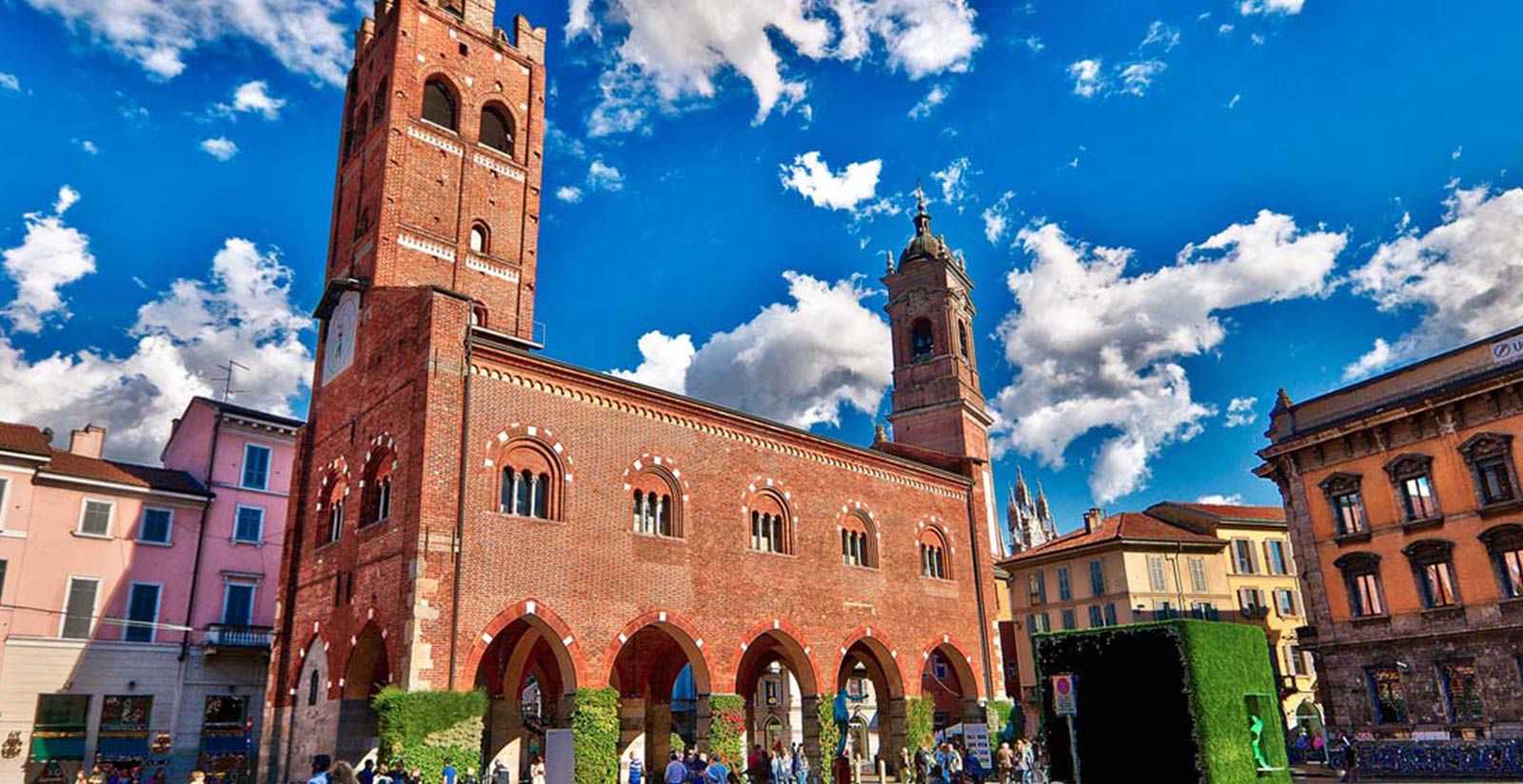Monza's old town
CATHEDRAL
The Cathedral was founded in the late sixth century by Queen Theodolinda, celebrated in history for leading the conversion of the Lombards to Catholicism. In this early stage almost nothing survived, except for few ruins of building materials and liturgical furniture which are now preserved in the museum. Between the eleventh the twelfth century, a transformation from an ancient basilica into a modern cathedral was made with the help of Visconti family. In 1346, the altar was consecrated. In the second half of the century, the facade called "wind", the pulpit and baptisery were built by Matteo da Campione. His tombstone (1396), is placed outside the chapel of the Rosary. He was an interpreter of the Visconti aspiration to build a great church for the imperial coronation, according to Germanic tradition which required the emperor to take three crowns: the silver in Aachen. the golden one in Rome and the 'Iron one' at Monza. Matthew also built the two twin chapels on either side of the main apse. The right one is dedicated to St. Rosario, the left one is dedicated to Theodolinda. The paintings that now adorn the interior of the cathedral date back mainly to the 700, a century that transformed the building into a sort of anthology of the late Baroque painting. The bell tower, about 75 high, stands in the sky over Monza . Its construction lasted from 1592 to 1606. The Chapel of Theodolinda is on the left of the central apse. It was painted by Zavattari between 1444 and 1446, with the episodes from the "Historia Langobardorum".The chapel houses the Iron Crown and the sarcophagus containing the spoils of Queen Theodolinda. The Iron Crown, an extraordinary achievement of Byzantine gold, is revered as a relic: inside it there is a circle of iron that, according to tradition, was made from one of the nails used for the crucifixion of Christ. The Crown became the very symbol of the Kingdom of Italy and was used to crown Charles V, Napoleon and Ferdinand I.
ARENGARIO
Built in 1200 as the seat of government, it gets its name from the Germanic hriggs hari-meaning circle, because the town assembly members would sit in a circle. The old municipal building has typical architectural features of the Gothic age. The south facade is dominated by a small balcony surrounded by slabs of marble called 'parlera'. At center of it lies a lectern. Here the decrees of the Municipality were read and the people were granted. The north facade is characterized by a brick squared embattled and cuspidate bell tower. The ground floor is characterized by the large arcade of two bays, it is bordered by stone pilasters, topped by brick arches and decorated with white marble inlay. This space was used for the market. On the first floor there is a large hall, once used for assemblies. Nowadays it is used as a museum space. It has brick walls characterized by a series of trifore made with italian white marble.
Distance from the hotel: 4 km
www.comune.monza.it

